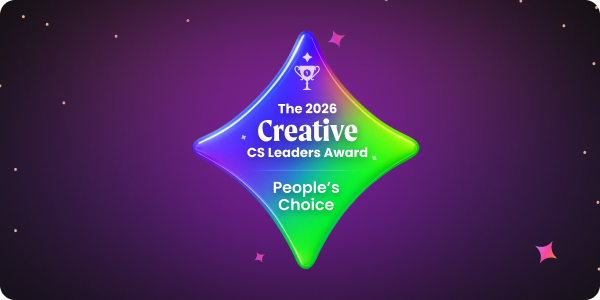When breaking down the customer lifecycle stages, the facts are clear: the most important segment is the onboarding stage.
The onboarding stage is where your customers realize their first time-to-value with your product and experience the different use-cases your product offers that deliver your customers’ business goals and outcomes.
But the potential of successful onboarding can go even further — profoundly improving your chances of scaling your customer accounts.
And it works both ways: weak onboarding experience can lead to degenerative relationships. In other words, churn and revenue loss.
So, if onboarding is such a critical stage in the customer journey, we must identify the main areas to focus on and invest in; to guarantee, without fail, the success of our customer relationships increases the likelihood of retaining and growing account revenue.
What you need to do to make customer retention happen
Step 1: Deliver the first time-to-value as soon as you can
The earlier your customers experience their first time-to-value with your product (what we know as the “Aha! moment”), the better. This means that as CSMs, we should focus on making that moment happen as soon as possible.
Usually, the CSM’s first formal interaction with each customer will take place during the Kickoff call.
What I like the most of the kickoff call is that customers don’t really know what to expect so you can excite them with an amazing kickoff presentation that visualizes your detailed onboarding plan and even presents use-cases that can immediately address your customer’s needs and leave them wanting more to get going with their onboarding.
The ideal way to prepare for a Kickoff is to go over any important notes that were taken during the sales process — to underscore the main pain points and challenges the customer is looking to solve by using your solution, which features and components of your product can deliver immediate value to their business and identify the industry your customer is in.
This identification process lets you investigate other successful use-cases with other existing customers in the same industry and see which one of them would be a good fit for your customer.
Then, you can internalize all this information and plan a kickoff call that already addresses the most important items the customer is looking to achieve with your product.
The kickoff call is also a perfect time to go over how the onboarding process will look like and what will the customer achieve in each stage of the onboarding
Step 2: Map out an onboarding journey that will drive the customer to success
Now that you have the customer ready and waiting to begin their onboarding, you need to build an onboarding journey that will lead to success (read: retention).
When building the onboarding journey there are two main questions that I ask myself in order to build and customize the best possible onboarding process for each client.
- What are the main objectives the customer is looking to achieve and how can I accelerate the onboarding process to lead them towards their objectives? (Desired Outcome)
- How can I implement my product knowledge to know Based on my knowledge of the product, which features I train the customer on, and which features should I emphasize? (Appropriate Experience)
The answer to these two questions allow me to combine the desired outcome and the appropriate experience — in order to formulate an onboarding process that is completely focused on accelerating and guiding the customer towards their desired outcome.
So now that you mapped it out, it’s time to dive to implement the product training, product power-up and tune-up throughout the onboarding process — in order to provide the customer with an efficient, effective and impactful onboarding.
Step 3: Segment your onboarding process
Once you have a clear idea of what are the objectives the customer is looking to achieve and you have identified the product features that will help the customer reach those objectives, you can now break down your onboarding process into segments.
The idea behind breaking down the process is to separate the basic product components that are easiest to learn and train your customers with.
Once your customers have a basic level of understanding on how to use your product, you can finally deep-dive into its advanced features, additional configurations.
This lets you customize the product to the customer’s needs even more. It’s important to mention that as we progress with the customer, you’re also showcasing added value.
The more your customers internalize your product's value and how to use it, the more they will integrate it into their internal processes, driving greater product stickiness and product retention.
Ideally, your onboarding process should look something like this:
- Basic Training
Goal: Provide a basic training to the customer that gives them the knowledge and understanding on how to use all of the relevant basic features of the product
- Advanced Training
Goal: To provide the customer with detailed training, focused on the more advanced features that require a higher level of understanding and practice in order to increase the added value of your product.
- Power-up/Tune-up
Goal: To integrate/configure additional features that can improve the outcome the customer will get from the product.
This often require involvement from the customer’s dev team to set it up, but the optimized outcome is worth the investment for all stakeholders.
- Onboarding Review
Goal: To make sure that all of the relevant basic and advanced features have been covered throughout the onboarding and understand if the customer is now ready to use your product at full operational scale, this indicates the end of the onboarding process.
Set up for success
Once you have completed the onboarding, the most important thing is that the customer has a clear understanding of how your product will be an integral part of their business success and that they have a complete understanding on how to use the ins and outs of every relevant feature.
In a few words, the CSM needs to make sure that the customer has all the relevant tools, knowledge, and know-how to succeed after the onboarding.
This applies both to customers that will move on to continuously working with their dedicated CSM.
Regarding onboarding, this would be the main goal, since the customer navigated from learning how to use your product, to using it on a full operational scale.
It is after the onboarding that the customer will have the time to truly experience your product and its value delivery towards the customer’s desired outcome — which will at the end of the day, determine retention.
Desired outcome or churn? It’s up to onboarding
When it comes down to customers that are a good fit for your product, a successful onboarding is certainly the main differentiator for whether or not a customer will churn. If they couldn’t achieve any of their desired outcomes due to knowledge gaps in how to use the product, churn is on the horizon.
On the flip side, a customer that you’ve converted into a product expert, mastering every product feature will guarantee that they achieve their desired outcome.




.png)

.png)




%20(1).png)
















.png)
.png)
.png)



.avif)





.png)
.png)







